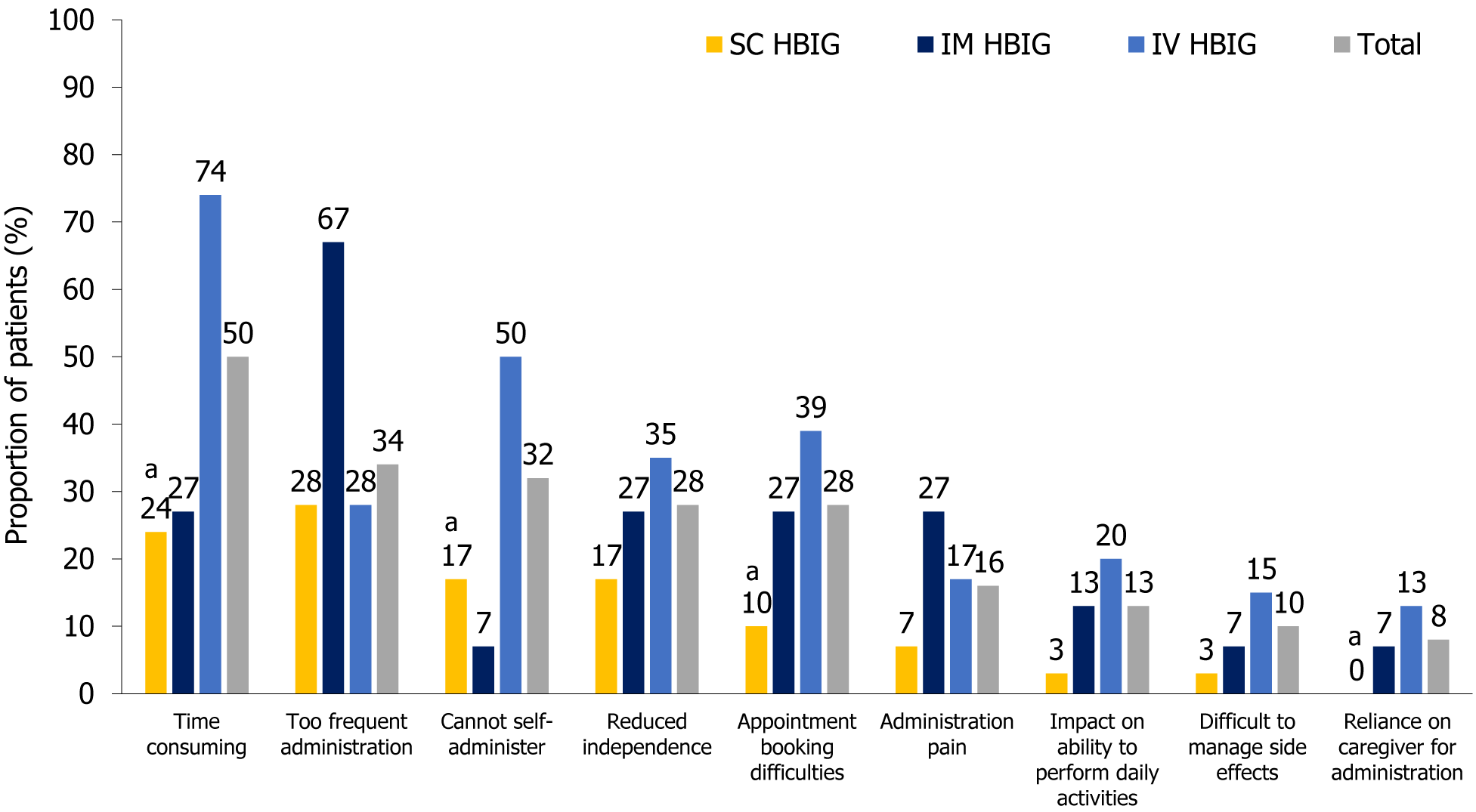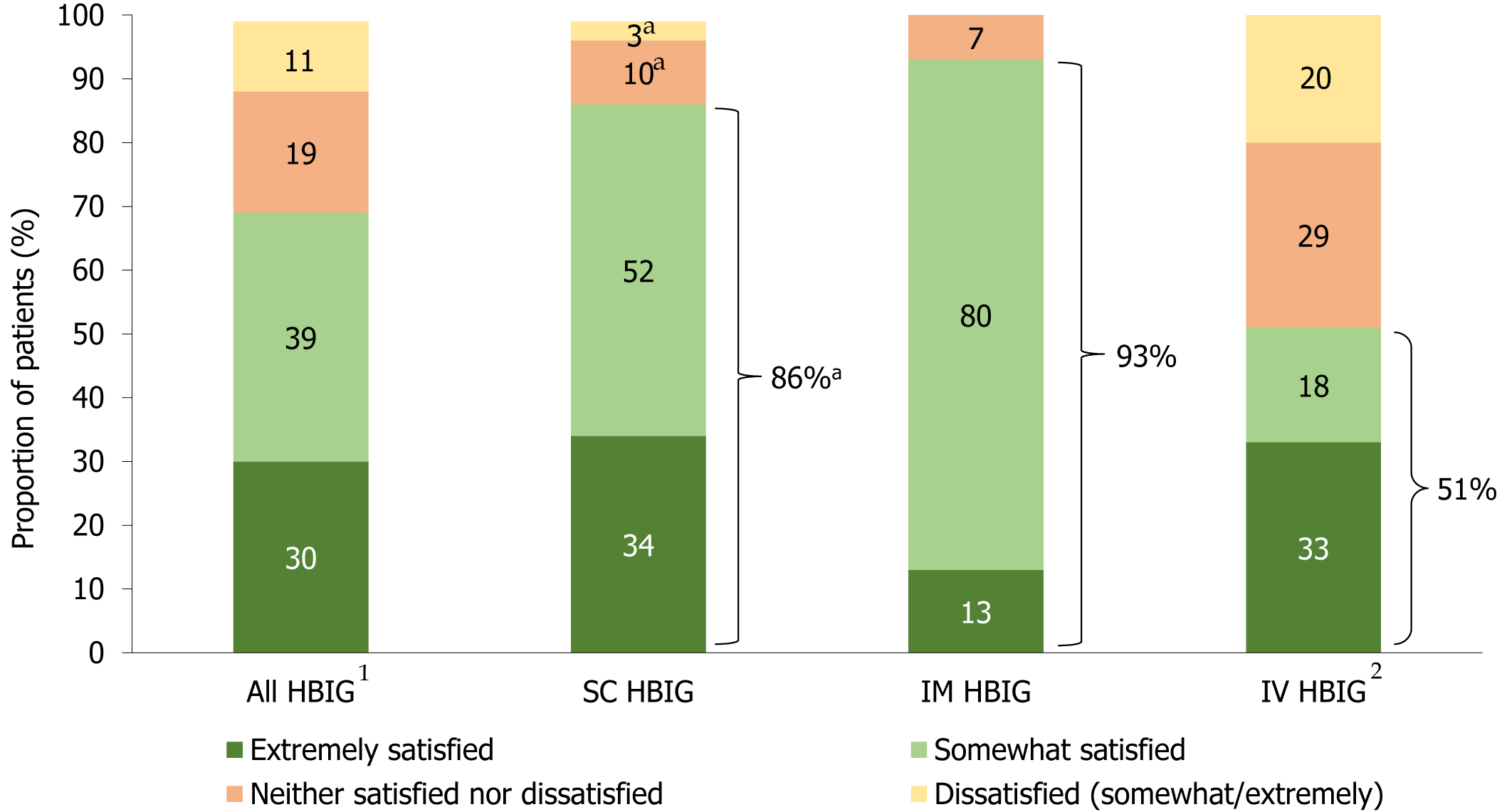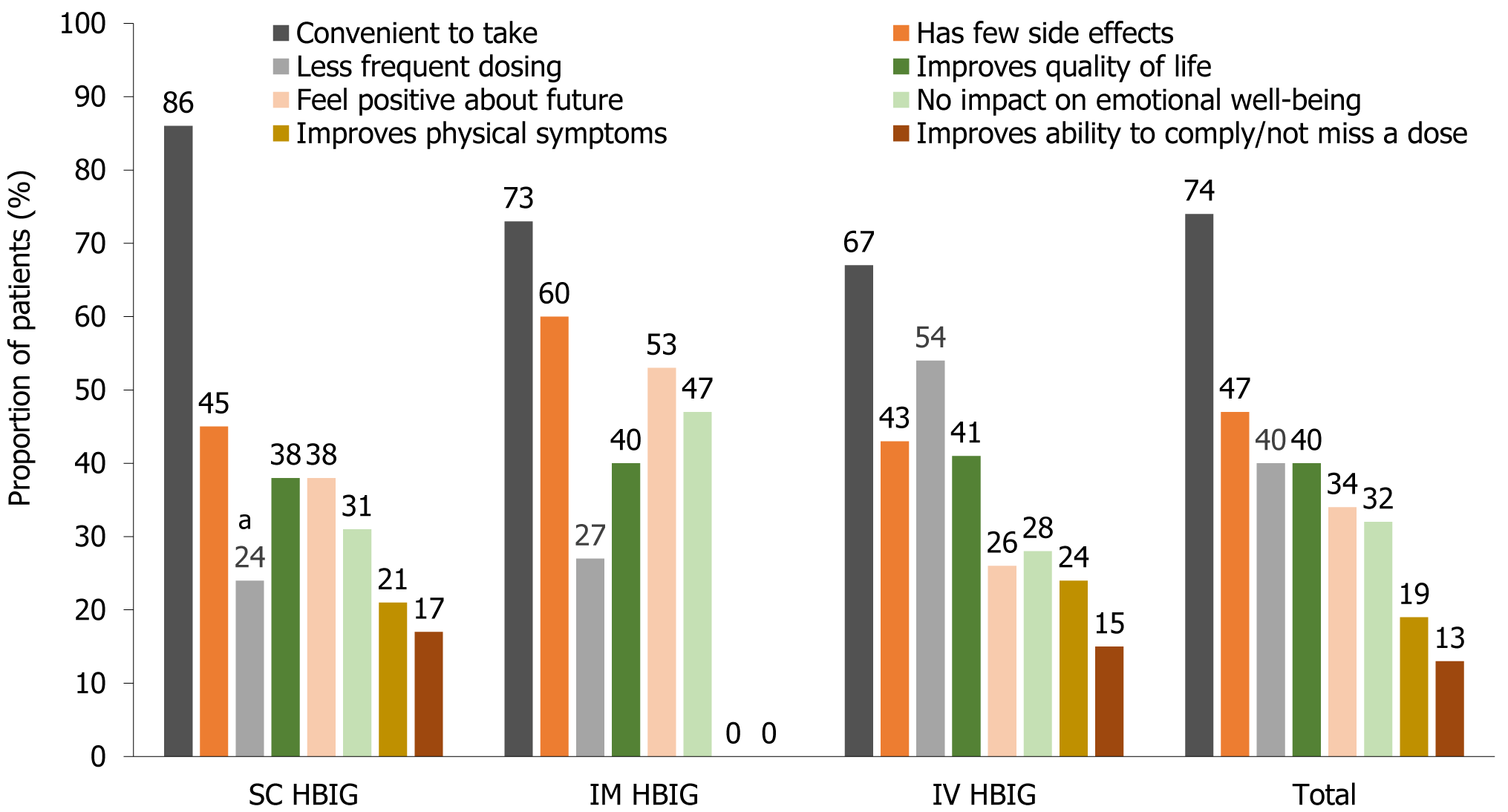Copyright
©The Author(s) 2024.
World J Transplant. Sep 18, 2024; 14(3): 90949
Published online Sep 18, 2024. doi: 10.5500/wjt.v14.i3.90949
Published online Sep 18, 2024. doi: 10.5500/wjt.v14.i3.90949
Figure 1 Current hepatitis B immunoglobulin treatment.
A: Life aspects affected; B: Patient experience. aP ≤ 0.05 denotes statistically significant difference vs intravenous hepatitis B immunoglobulin. 1Issues caused by treatment. HBIG: Hepatitis B immunoglobulin; IM: Intramuscular; IV: Intravenous; SC: Subcutaneous.
Figure 2 Challenges faced by patients using hepatitis B immunoglobulin treatment.
aP ≤ 0.05 denotes statistically significant difference vs intravenous hepatitis B immunoglobulin. HBIG: Hepatitis B immunoglobulin; IM: Intramuscular; IV: Intravenous; SC: Subcutaneous.
Figure 3 Satisfaction with current hepatitis B immunoglobulin treatment.
Percentages are rounded to the nearest whole numbers therefore may not add up to 100% for each column. aP ≤ 0.05 denotes statistically significant difference vs intravenous hepatitis B immunoglobulin. 1Percentages calculated as a proportion of 89 patients who responded to this question. 2Percentages calculated as a proportion of 45 patients who responded to this question. HBIG: Hepatitis B immunoglobulin; IM: Intramuscular; IV: Intravenous; SC: Subcutaneous.
Figure 4 Factors influencing choice of most appropriate hepatitis B immunoglobulin treatment.
aP ≤ 0.05 denotes statistically significant difference vs intravenous hepatitis B immunoglobulin. HBIG: Hepatitis B immunoglobulin; IM: Intramuscular; IV: Intravenous; SC: Subcutaneous.
Figure 5 Statements describing patients’ perceptions of ‘convenience’ regarding hepatitis B immunoglobulin treatments.
Percentages refer to the proportion of patients who, unprompted, mentioned the specific aspects listed. HBIG: Hepatitis B immunoglobulin; IM: Intramuscular; IV: Intravenous; SC: Subcutaneous.
- Citation: Rizza G, Glynou K, Eletskaya M. Impact of hepatitis B immunoglobulin mode of administration on treatment experiences of patients after liver transplantation: Results from an online survey. World J Transplant 2024; 14(3): 90949
- URL: https://www.wjgnet.com/2220-3230/full/v14/i3/90949.htm
- DOI: https://dx.doi.org/10.5500/wjt.v14.i3.90949













